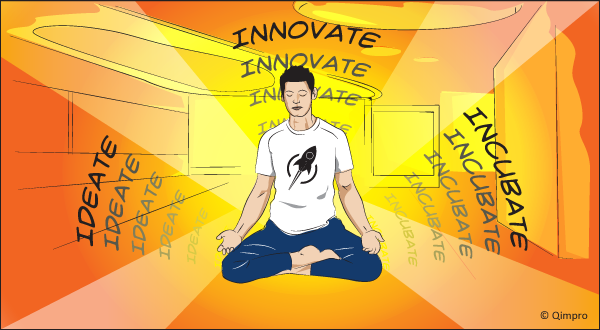How can Start-ups effectively validate their ideas?

Wear a Blue Hat to generate ideas, with customers
Start-ups
The mantra for a start-up is Ideate / Innovate / Incubate.
The mantra for an excellent organization is Faster / Better / Cheaper / Different. In order to be Different, one must Ideate / Innovate / Incubate.
Last Sunday, at the IIT Bombay E-Summit 2020, this was my key take away.
While mentoring four different start-ups, individually, I realized that the budding entrepreneurs needed help in validating their ideas. Just as excellent organizations still do.
Performance Excellence
Excellence is achieved when all customers are satisfied: External / Internal / Society / Mother Earth. There is no option.
As a first step, we need to ideate about what would delight our External customers? These customers are the reason for our existence. These customers defines the Quality required from our outputs, by voting with their money. These customers are the final inspectors. These customers pay our salaries.
Think of any excellent organization. There is every likelihood that the core competencies of this organization are:
- An ability to understand External customer needs
- An ability to translate the Voice of the External-Customer into product and process designs
- An ability to outsource processes that are not their resident competency.
Start-ups should benchmark such excellent organizations. More specifically, in understanding the needs of External customers.
Focus Group Meetings
I strongly recommend the use of Focus Group meetings for understanding External customer needs.
A focus group is a marketing tool that organizations use to find out how members of the public receive a product and how the product can be improved.
During the focus group, a facilitator asks participants questions about the project, and the participants provide their opinions and ideas in a free-form style.
This market research is not a post-mortem study. It is an ideation exercise in collaboration with the External customer. It is Faster / Better / Cheaper. In most cases, it may also be Different.
Different
How can one make a Focus Group meeting different? I suggest following the Six Thinking Hats methodology authored by Edward de Bono.
The Six Thinking Hats method may well be the most important change in human thinking for the past century….. and more. After all, ‘thinking’ is the ultimate human resource.
Each of the Six Thinking Hats has a colour. The colour of the hat is also related to its function.
- White Hat: White is neutral and objective. The white hat is concerned with objective facts and figures.
- Black Hat: Black is sombre and serious. The black hat is cautious and careful. It points out the weaknesses in the idea.
- Red Hat: Red suggests anger, rage and emotions. The red hat gives the emotional view.
- Yellow Hat: Yellow is sunny and positive. The yellow hat is optimistic and covers hope and positive thinking.
- Green Hat: Green is grass, vegetation and abundant, fertile growth. The green hat indicates creativity and new ideas
- Blue Hat: Blue is cool and the colour of the sky. The blue hat is concerned with control, the organization of the thinking process, and the use of other hats. The blue hat is the facilitator.
The Blue Hat facilitator in a Focus Group meeting, allocates defined time for the group members to wear a specific coloured hat. The sequence of hats defined by the facilitator, ultimately generates breakthrough ideas.
The Six Thinking Hats methodology has been applied at Tata Consultancy Services.
Random Thoughts
- There is nothing more sad and wasteful than a roomful of intelligent and highly paid people waiting for a chance to attack something the speaker has said.
- We need to actively use Creativity Tools to re-ignite our dormant right-brains.
- Start-ups can have a strategic advantage when they demonstrate a deep understanding of External customer needs.
- Can you imagine the State Government hosting specific and structured Focus Group meetings with a cross-section of citizens?

I just learnt a nice concept – The Six Thinking hat methodology. Will apply !!
Try it. It works.